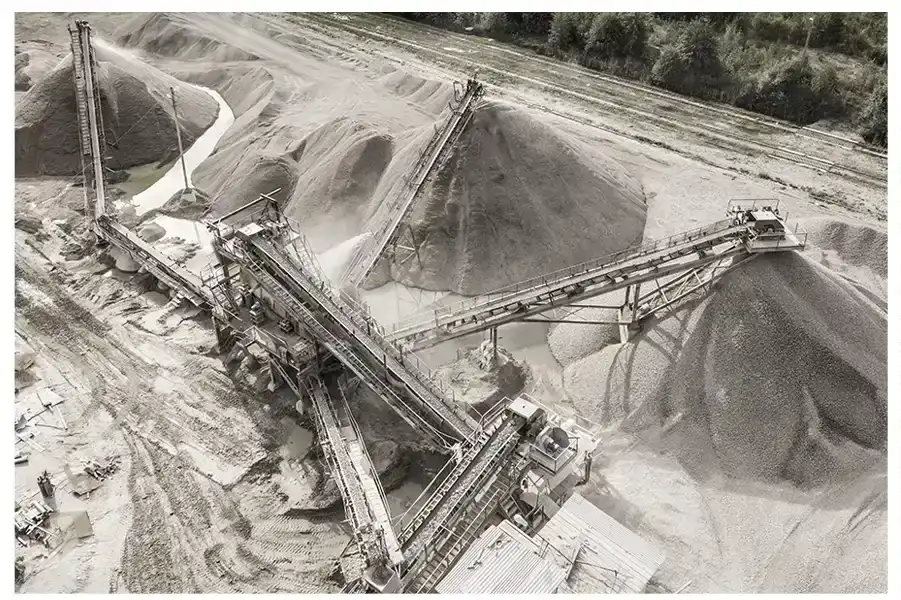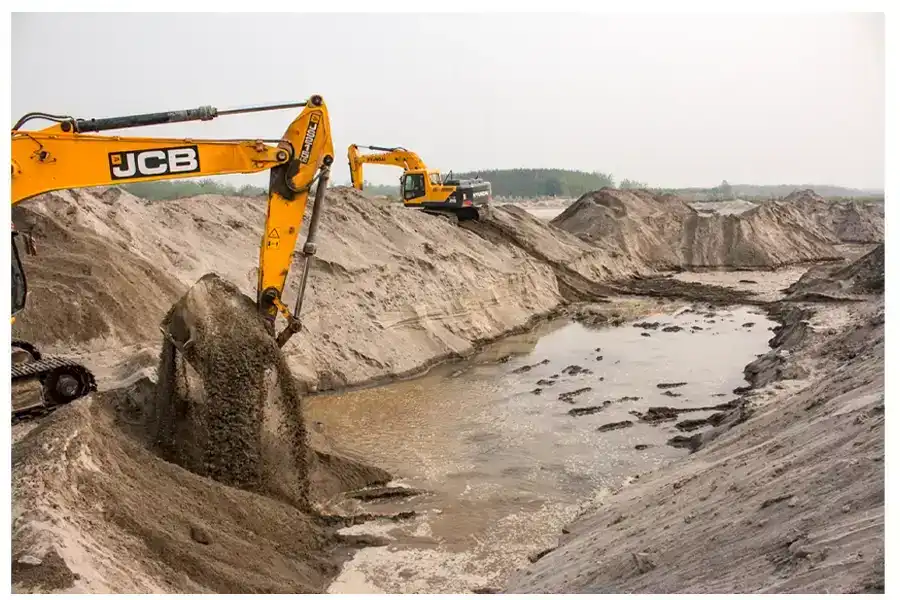
Sand is an important material in every construction process. Both River Sand and M Sand have different properties - strength, durability, source, workability, etc.
Do you need clarification on river sand and M sand? Do you want to know the difference between river sand and M sand? Where can I find construction sand? We've got what you're looking for. Read the complete write-up to choose the best sand for construction.
What is M Sand?

M Sand, or manufactured sand, is an artificially manufactured sand that is used in various brickwork and masonry-related work. The particles of M sand are homogenous in nature.
What is River Sand?

River sand is found to be naturally occurring at river beds and can be used in all phases of construction due to its high functionality. However, due to its naturally occurring nature, it is a depleting resource, and thus, multiple alternatives to river sand are being used these days.
The shape of river sand is angular and cubical, has a rough texture, and is hence better for concrete. Due to river sand being a scarce commodity, the purchasers must be sure of the sand they purchase because the chances of adulteration also significantly increase, as do the chances of impurities.
Read this article to know more about what river sand is.
Difference Between M Sand and River Sand
M sand and river sand are two types of sand commonly used in construction and other applications. They have several differences in terms of their origin, composition, and properties.
| |
M SAND
|
RIVER SAND
|
|
TEXTURE
|
Since M sand is artificially produced using machinery, the particles are rougher and more angular.
|
Due to natural erosion and transportation, river sand tends to have rounded edges and a smooth texture.
|
|
ORIGIN
|
How sand is manufactured is by crushing hard stones like granite, basalt, or limestone into fine aggregates by artificial means. It is a by-product of the quarrying process and is manufactured through various crushing, screening, and washing stages.
|
River sand is naturally occurring sand found in river beds and riverbanks. Thousands of years are required for the rocks to weather, and river sand is formed through erosion, carried by rivers, and deposited along their course.
|
|
SOURCE
|
M sand is produced artificially in controlled environments and does not depend on naturally occurring sources. However, it can be produced in quarries away from river beds, ensuring a more stable supply.
|
River sand is naturally occurring and is formed by the weathering of rocks on river beds. However, excessive mining of river sand can lead to ecological and environmental issues in some places.
|
|
USE IN CONSTRUCTION
|
M sand is used for brickwork, concrete, and masonry. In regions where river sand mining is banned, M sand has gained immense popularity.
|
River sand has been used for various construction purposes, like plastering, brickwork, concrete, and masonry.
|
What To Consider Before Purchasing River Sand Or M Sand?

M-sand is manufactured in controlled conditions using artificial means, so its quality and gradation can be more consistent compared to river sand, which can vary in quality depending on the source.
M-sand generally has a more angular and cubical shape, which provides better workability and bond strength in concrete than river sand's rounded particles.
Excessive sand mining from rivers can lead to ecological imbalances and environmental issues due to the scarcity and duration taken to form the River sand, thus affecting riverbed stability and wildlife habitats. In this context, M-sand can be considered an eco-friendly alternative.
The cost of M-sand may be lower compared to river sand, especially in regions where river sand is scarce or subject to high demand.
-
Suitability for Concrete and Mortar:
Both river sand and M-sand can be used in concrete and mortar mixtures, but the appropriate type and ratio depend on specific project requirements and local standards.
River sand might contain silt and other impurities, which can affect the quality of the construction material. M-sand, being manufactured, generally has fewer impurities.
Despite M Sand's wide usage and preference in construction, it is not the best-suited sand for construction. Since river sand is less available, Concrete Sand, or C sand, is the best for construction.
Why is C Sand (Concrete Sand) Best for Construction?

C Sand or concrete sand is the most commonly used sand in construction. It is highly preferred. It is made artificially by crushing rocks and graded into smaller, coarser particles. Concrete sand is best for construction because of its amazing properties, such as less silt, being well-graded, etc. Refer to the article What is concrete sand to learn why C sand is best for construction.
The next question that arises is where to buy high-quality C Sand in Bangalore.
If you have read the article, you should be familiar with the properties of C sand, and Alpha Sand fulfills all those requirements.
Why Choose Alpha C Sand?

Alpha C Sand has a particle size ranging from 4.5 mm to 150 microns and adheres to the guidelines from IScode 383 to provide high-quality sand to customers. Alpha C Sand stands out from the other C Sands available on the market because of its unique features and commitment to customer satisfaction. For more information on why Alpha Sand is the best choice, read this article: Why Choose Alpha.
CONCLUSION
The article should have answered all of the questions that you had at the beginning of the article. With this knowledge, you have the clarity you need to choose the right sand for your home, and where you should buy it. Happy Construction!!
FAQs:
Which type of sand is best for construction?
C Sand or Concrete sand is the best sand used for construction. Each sand has different uses of its own, and it is best to consult a supplier before making your choice.
Which sand is best for RCC construction?
A combination of coarse sand and fine sand is the best suited for RCC construction.
Which is the best construction sand in India?
Each sand has a specific purpose of its own. For decades, river sand was considered the best sand for construction, but lately, M sand and C sand plays a major role in the durability of structures.
Which sand is not good for construction?
River sand is not usable in construction due to its scarce availability, and effervescent sands like desert sand are also not suitable for construction.
What is the M Sand 1 unit price?
1 unit M sand equals to 0.3865 kg. If we calculate 800₹ per ton, the price of 1 unit price of M sand is 3.092₹, but no one sells at that price. The actual cost of M Sand increases with a decreased quantity of the material requirements. However, Alpha Sand sells C Sand in 30 kg bags, which will cost you around 150 ₹.
What is the price of river sand in Bangalore?
The price of River Sand starts from 1000 ₹ per Ton and can go up to 3000 ₹ per ton or more based on the scarcity of the river sand.
What is the difference between River Sand and Plastering Sand?
Refer to this article to know the difference between river sand and plastering sand.